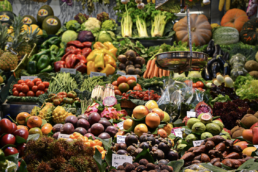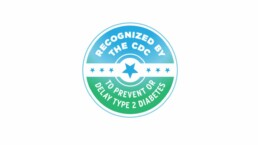By Jenny Fowler, First Mile Care DPP Coach
Food prices have shot higher in the last year than most of us have ever experienced. The USDA Consumer Price Index for grocery store food purchases was 8.4% higher in March 2023 than one year earlier. The cost of food has increased for multiple reasons, including overall inflation, labor shortages, avian influenza, the Russia-Ukraine War, residual pandemic-related supply chain issues, and weather-related emergencies such as droughts, flooding, and wildfires.
The decisions you make when food shopping can be tough these days. Do you buy the item that’s best for your budget, for animals, for the planet, for farmers, for local markets? What wins out when you are forced to choose between your values, your taste buds, and your pocketbook? The First Mile Care Diabetes Protection Program (DPP) recognizes there’s no one-size-fits-all approach to healthy eating. Our coaches counsel DPP participants to find a balanced diet made up of nourishing, whole foods, heavy on vegetables and fruits, that works for their particular palate and lifestyle.
The good news is that with some smart shopping practices and a few substitutions, you can eat healthy, appetizing food and stay within your budget. In this two-part article, I’ll provide some tips that can help with your meal ingredient purchasing decisions, as well as how to make meal prep at home faster and thereby more practical for our busy lives.
Efficient prep practices
Restaurant spending is up around 40% from four years ago, according to U.S. Census Bureau data. Despite higher prices, Americans are continuing to dine out, with 61% in a recent survey saying it’s for convenience and 28% saying they don’t have enough time. Herein lies the conundrum, as my top tip for eating healthy, budget-friendly meals is to prepare meals at home as much as possible.
Home cooking has gotten a bad rap, as many people think cooking is too difficult, time consuming, and expensive. The COVID crisis gave many folks the gift of time to rediscover the rewards of preparing home-cooked meals. Getting the whole family in the kitchen cooking together helped fill the void from the loss of our usual face-to-face connections and community activities.
It’s a reality of life that you’re less likely to cook a meal spontaneously after a long, busy day. In an ideal world, I’d get all my meal prep done during the weekend for the coming week — chopping vegetables, dicing fruit, mixing salad dressings, roasting nuts and meats, etc. That makes it much faster to fix a healthy meal during the week, rather than starting from scratch each day and prepping as you go. However, the reality is that Sunday meal prep is not always practical for everyone. Weekends are often full of activities or just a time for relaxation and rest. Downtime is an important part of a healthy lifestyle, too!
Here are a few tips to make prepping healthy meals easier throughout the week.
- Choose an easy recipe like overnight oats or chia seed pudding that you literally just mix the ingredients together and put in the fridge. It’s very quick prep time and it lasts for days in the fridge.
- Plan at least two meals from the same ingredients so you save on shopping time and don’t waste your food budget. For example, roast a sheet pan of chicken and vegetables for dinner one night, then add leftover chicken and roasted veggies to salad greens or already cooked quinoa for the next day’s lunch.
- Meal prep doesn’t have to follow a recipe! Keep canned goods on hand like beans, salmon, or tuna, and fun salad toppings like artichoke hearts. You can throw these together and add fresh salad greens or leftover vegetables to complete the meal. Changing the herbs or spices you add to the same basic ingredients can also keep things from getting boring.
- Open an extra can and double your recipes so you won’t have to cook as often. However, have a plan for your leftovers so they don’t sit in the fridge too long and then end up as wasted money in the trash.
Healthy eating does not have to break the bank, and is often easier on your wallet than a traditional burger. Planning your meals to fix at home not only makes it less likely that you’ll be tempted by the drive-through window, but may also help to cut down on food waste. Even if you’re a cook-to-survive person rather than a foodie, there’s a wealth of resources on the internet to help you develop a go-to archive of easy-to-make, nutritious, tasty recipes on a budget.
In Part 2, I’ll look at some smart strategies for food shopping.
To learn more about how you can benefit from the First Mile Care Diabetes Prevention Program, take the prediabetes risk test and get started today!



